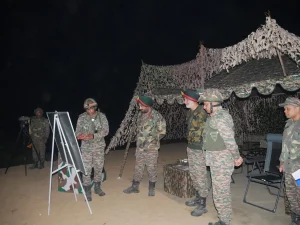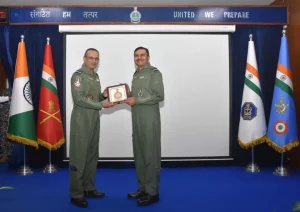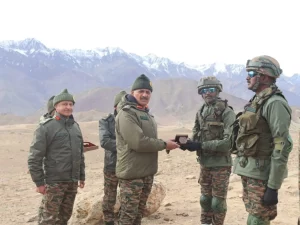For aspirants preparing for the National Defence Academy (NDA) and Combined Defence Services (CDS) examinations, mastering Physical Geography is of paramount importance. This subject not only plays a crucial role in the written examination but also enhances an aspirant’s overall understanding of the world, which is vital for future officers in the armed forces.
Role of Physical Geography in NDA & CDS Examinations
Physical Geography is a significant part of the General Knowledge paper in both NDA and CDS exams. It encompasses topics like landforms, climatic zones, hydrology, natural disasters, and environmental issues, all of which are frequently asked in the exam. A strong grasp of these topics can help aspirants score well in the GK section, which is often a deciding factor in clearing the written exam.
Enhancing Strategic and Tactical Awareness
Understanding Physical Geography aids in developing strategic and tactical awareness, which is essential for a military officer. Knowledge of terrains, weather patterns, and geographical conditions is crucial in planning military operations and formulating strategies during warfare or disaster management. For example, familiarity with mountain ranges, rivers, and coastal features can significantly impact defense planning and troop movements.
Applications in the Services Selection Board (SSB) Interview
The SSB interview assesses a candidate’s overall personality, intelligence, and situational awareness. Having in-depth knowledge of Physical Geography helps candidates perform better in Group Discussions, Lecturettes, and Situational Response Tasks. It enables them to analyze real-world scenarios, such as border disputes, environmental challenges, and climate change impacts, which are often discussed during the interview process.
Relevance in Military Operations and Navigation
A strong foundation in Physical Geography is indispensable for navigation, reconnaissance, and understanding battlefield conditions. Officers posted in various terrains, such as deserts, mountains, and coastal areas, must be well-versed in geographical concepts to adapt to and overcome environmental challenges. Additionally, knowledge of map reading and topography is fundamental for operational planning and execution in military service.
Boosting General Awareness and Decision-Making Skills
Physical Geography is not just limited to academic success; it also fosters a broader understanding of global issues. Topics like climate change, natural disasters, and resource distribution play a vital role in decision-making at both national and global levels. An officer with sound geographical knowledge can make informed decisions regarding environmental policies, resource management, and humanitarian missions.
Tips to Master Physical Geography for NDA & CDS
- Refer to Standard Books – NCERT Geography textbooks (Class 6-12) provide a strong foundation.
- Use Atlases and Maps – Regular practice with maps helps in visualizing geographical features.
- Follow Current Affairs – Keep track of environmental changes, climate events, and geopolitical issues.
- Solve Previous Year Papers – Practicing past questions helps in understanding the pattern and important topics.
- Watch Documentaries & Videos – Visual learning aids in better retention of complex concepts.
Conclusion
Physical Geography is not just an academic subject but a vital aspect of military knowledge. It plays a significant role in NDA & CDS exam preparation and enhances the analytical, strategic, and decision-making capabilities of future officers. By mastering this subject, aspirants can improve their chances of success in the exam and develop skills that will be beneficial throughout their careers in the Indian Armed Forces.



















